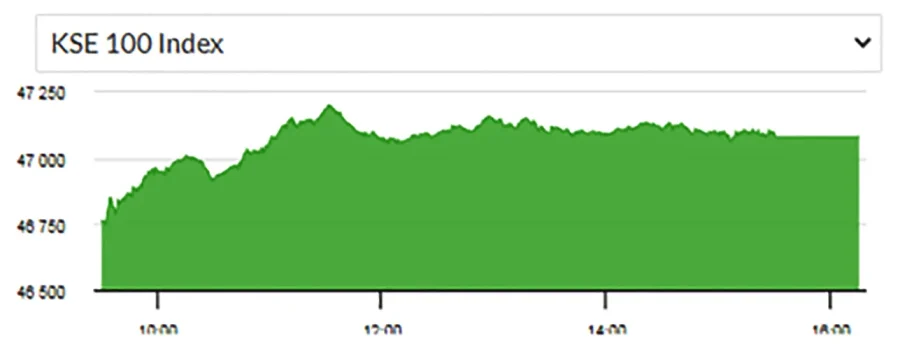Shares at the Pakistan Stock Exchange (PSX) trended upward on Wednesday, with the benchmark KSE-100 index surging past 300 points.
The index gained 323.03 points, or 0.69 per cent, closing at 47,079.83 points from the previous close of 46,756.80 points.
Meanwhile the bull-run of Pakistani rupee against the US dollar has entered the 20th successive day in the interbank market on Wednesday.
According to the data received from the forex traders, the local currency soared by another Rs1.07 against the greenback and was currently exchanging hands at Rs284.65 in the interbank market.
On Tuesday, the Pakistani rupee had maintained its upward trajectory against the US dollar, gaining 0.36% in the interbank market. At close, the rupee had settled at Rs285.72 after an increase of Rs1.04.
In a key development, Pakistan’s headline inflation clocked in at 31.4% on a year-on-year basis in September, the Pakistan Bureau of Statistics (PBS). significantly higher than the reading in August when it stood at 27.4%. On a month-on-month basis, it was up 2%.
“The strengthening of PKR against US dollar is expected to play a mitigating role, offering some relief from inflationary pressures,” said ArifHabib Limited (AHL) in a report.
Pakistan’s trade deficit also narrowed, largely due to import compression, as pressure on the country’s foreign exchange reserves reduced to some extent.









